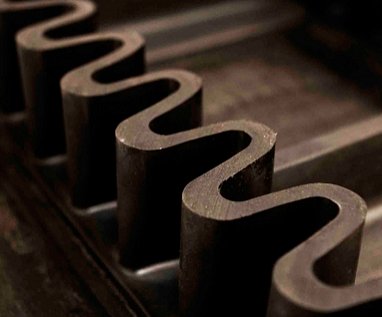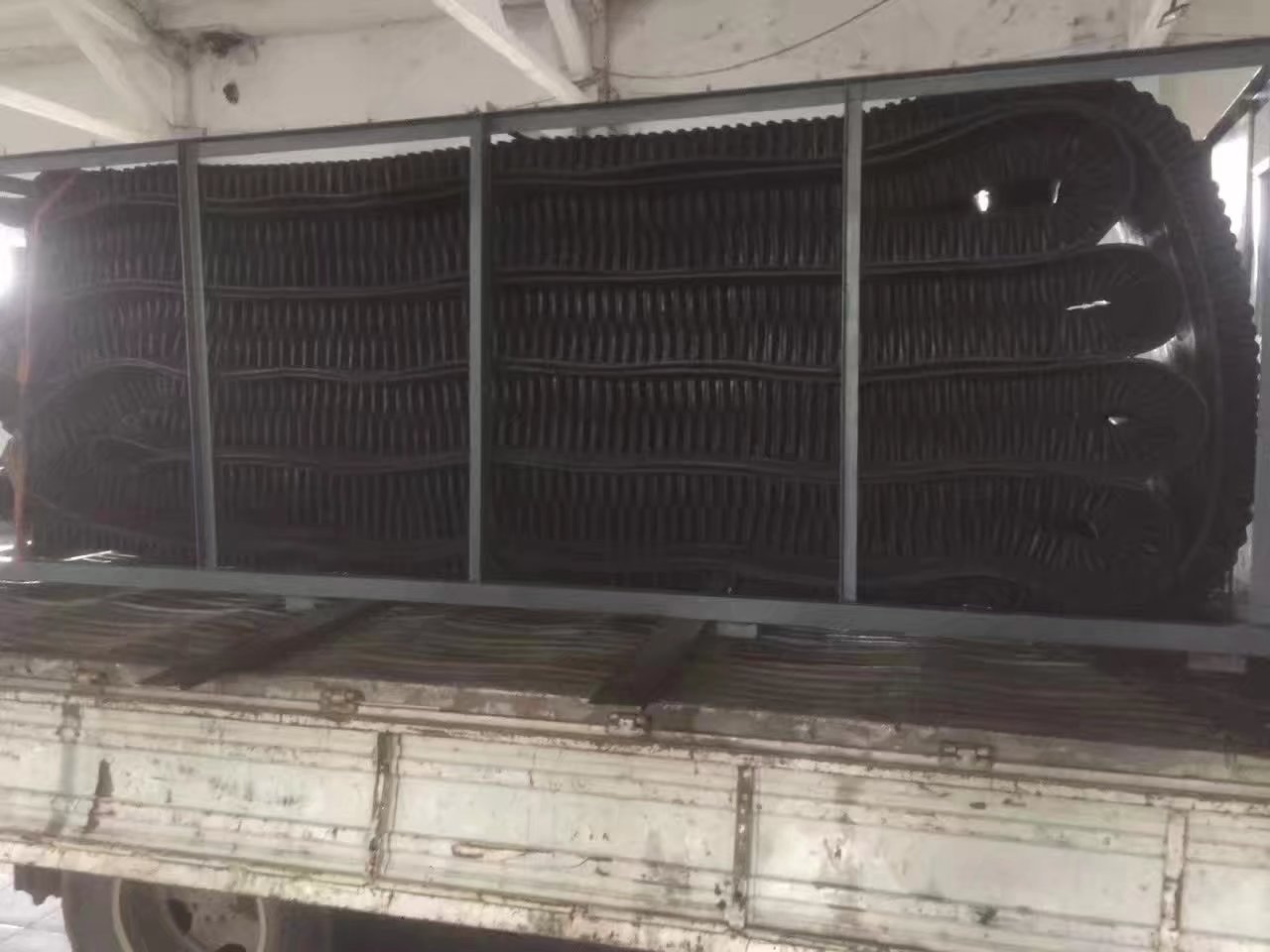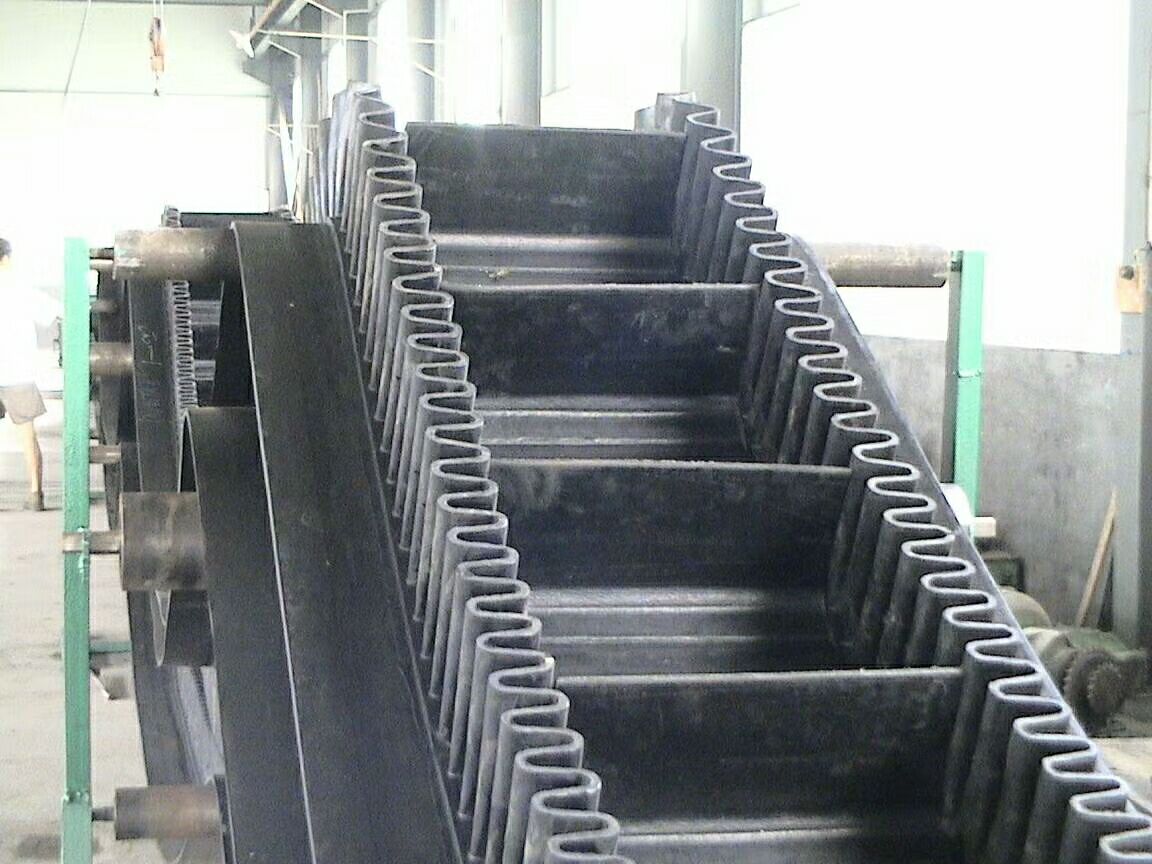


Sidewall conveyor belts for Fertilizer
In this kind of sidewall belt, the cleat is fastened in the belt with strengthened structure. It can not only hold the cleat tightly, but also handle more materials when running in conveyor.

Feature:
Corrugated sidewall conveyor belt is one of the most effective ways of elevating materials in a confined space, the economy is achieved by single belt operation, wide range material can be handled, less space requirement, no transfer point, low maintenance and big capacity. Corrugated sidewall belt can be designed into a set of complete transportation system according to application.
Sidewall conveyor belts for Fertilizer Structure:
Four parts: Top cover rubber; Bottom cover rubber;
Reinforced core; Cross rigid.
Thickness of top cover rubber: 3-6mm;
Thickness of bottom cover rubber: 1.5-4.5mm.
Belt core: Cotton, Nylon, EP or Steel Cord
The Width is the same as normal belt. The standard meets with GB/T7984-2001.
Cleat:

Due to our professional engineer’s experiences, factory got a brand new kind of sidewall conveyor belt cleat, which is Cleat types: T, TS, C, TC and TCS
The cleat is made of enforced fabric, solid, anti-shock to avoid distortion.
“TS” and “TCS” cleat are normally used for abrasion condition
“T” and “TS” cleat are normally used up to 40 degree
“TC” and “TCS” are normally used from 40 degree to 90
(c) the level of :2-10
(d) plastic cover: Face :1.5-8 mm non-Face: 0 mm-4.5mm
Sidewall conveyor belts always work together with the wave-shape Apron transfardng system, normally the angle is more than 30o, it also could work together with the common use belt conveyor for [he horizontal and short distance transportation (No clapboard generally).

Applications:
- Construction industry
- Potash and salt mining
- Stones and earth
- Fertilizer
- Chemical industry
- Recycling industry
- Rural co-ops and traders in agricultural commodities
- Agriculture
Sidewall conveyor belts for Fertilizer
Properties:
Sidewall conveyor belts for Fertilizer of bulk goods
Saves space, since conveyance at inclines of up to 90° is possible
Material conveyed is protected
Extremely high stability is provided in the traverse direction, good longitudinal flexibility
Different feed and discharge directions are possible by rotating the vertical run.
The Technical Data sheet of the base belt width and flange height is as the following :
| Bandwidth B of base | Block high H | Horizontal baffle high H1 | The wave bottom wide B1 | Effective bandwidth B2 | Empty wide B3 | Horizontal baffle form |
| 300 | 40 | 35 | 25 | 180 | 35 | TC |
| 60 | 55 | 50 | 120 | 40 | ||
| 80 | 75 | |||||
| 400 | 60 | 55 | 50 | 180 | 60 | TC |
| 80 | 75 | |||||
| 100 | 90 | |||||
| 500 | 80 | 75 | 50 | 250 | 75 | TC |
| 100 | 90 | |||||
| 120 | 110 | |||||
| 650 | 100 | 90 | 50 | 350 | 100 | TC |
| 120 | 110 | |||||
| 160 | 140 | 75 | 300 | |||
| 800 | 120 | 110 | 50 | 460 | 120 | TC |
| 160 | 140 | 75 | 410 | |||
| 200 | 180 | |||||
| 1000 | 160 | 140 | 75 | 550 | 150 | TC |
| 200 | 180 | |||||
| 240 | 220 | |||||
| 1200 | 160 | 140 | 75 | 690 | 180 | TC |
| 200 | 180 | |||||
| 240 | 220 | |||||
| 300 | 260 | 100 | 640 | |||
| 1400 | 200 | 180 | 75 | 830 | 210 | TC |
| 240 | 220 | |||||
| 300 | 260 | 100 | 780 | |||
| 400 | 360 |

